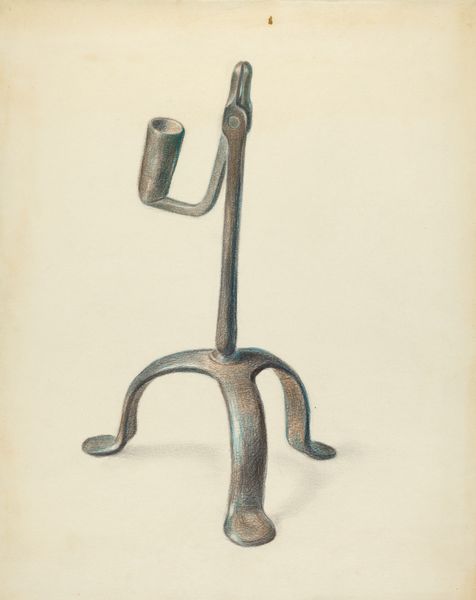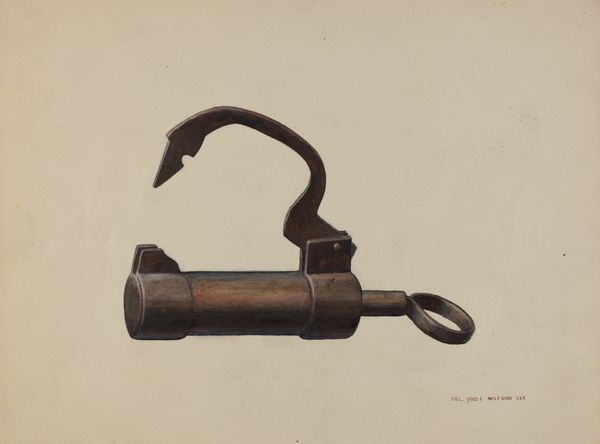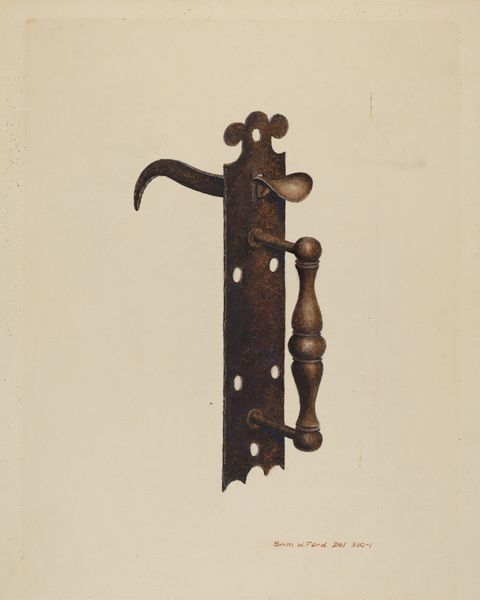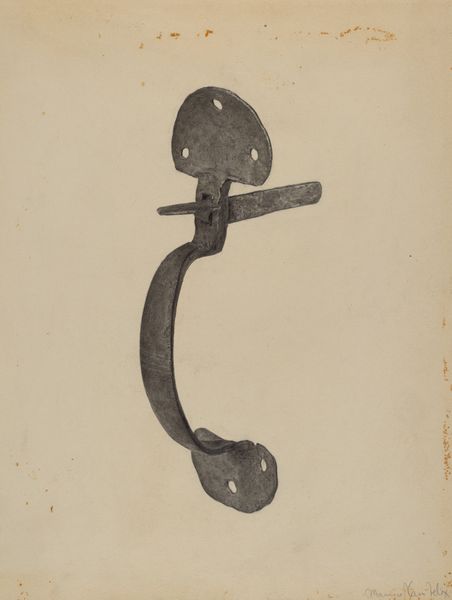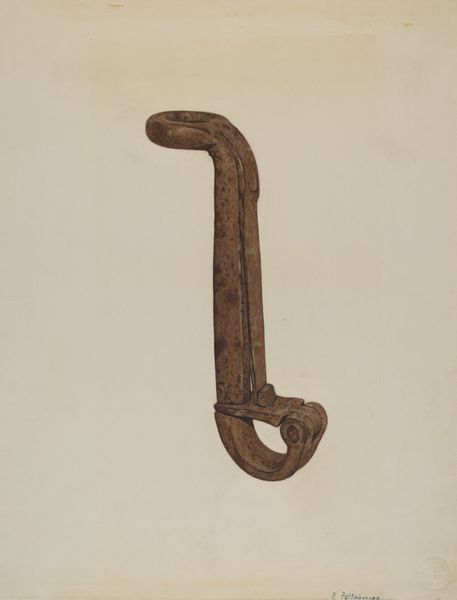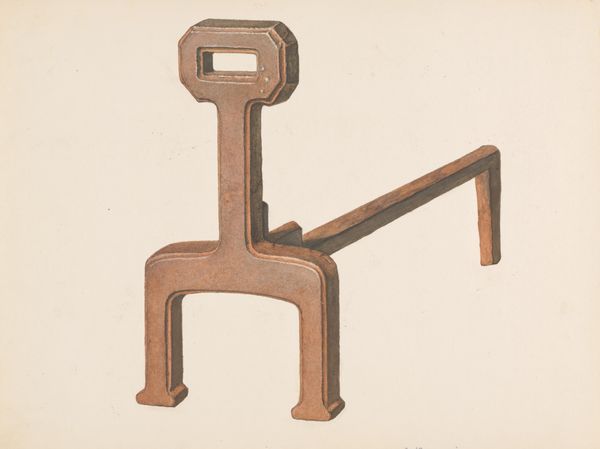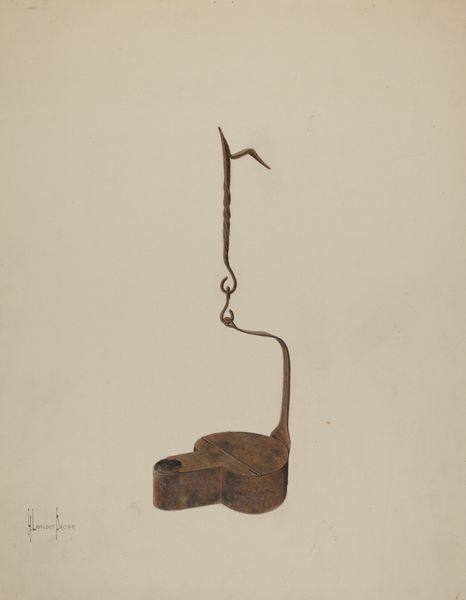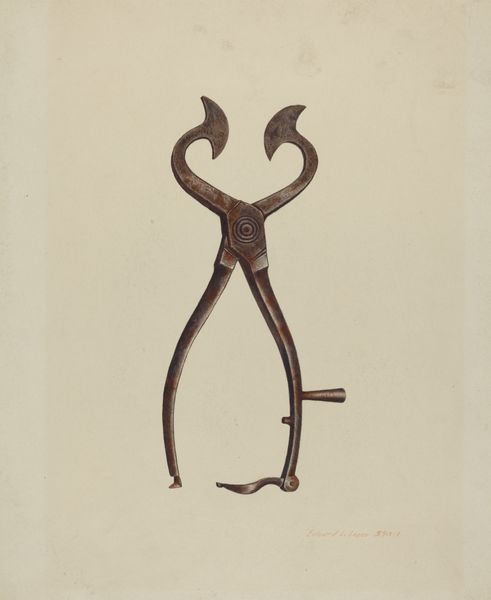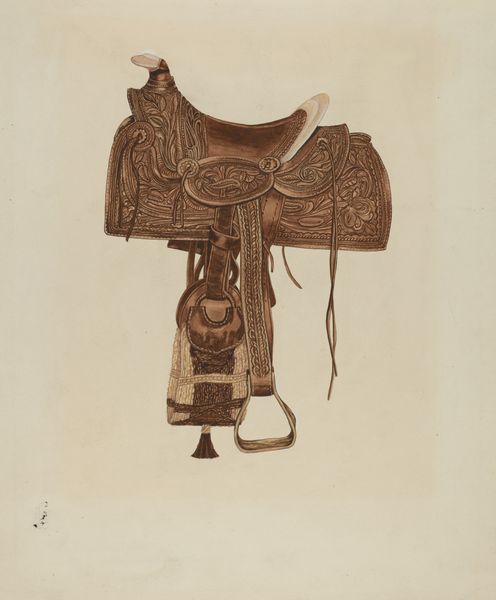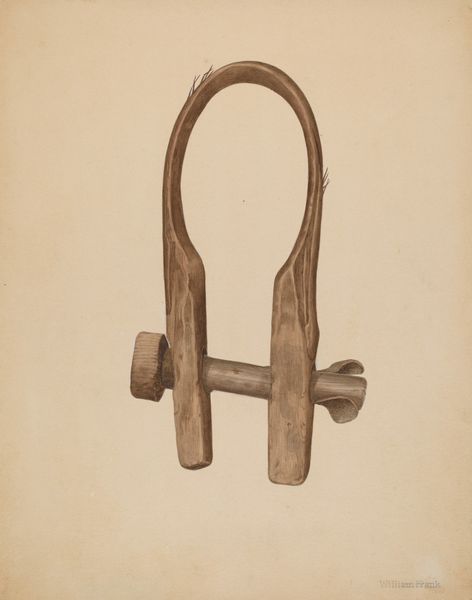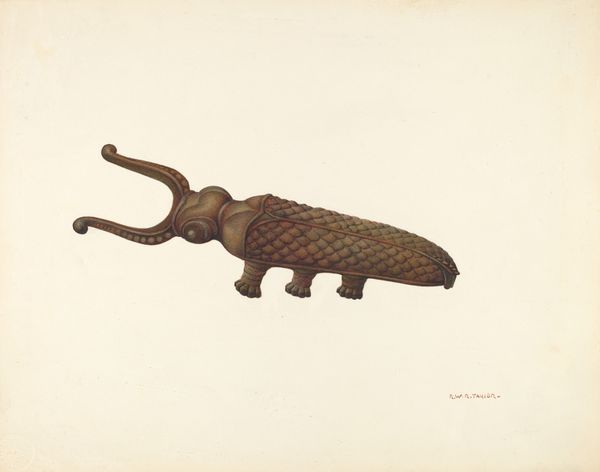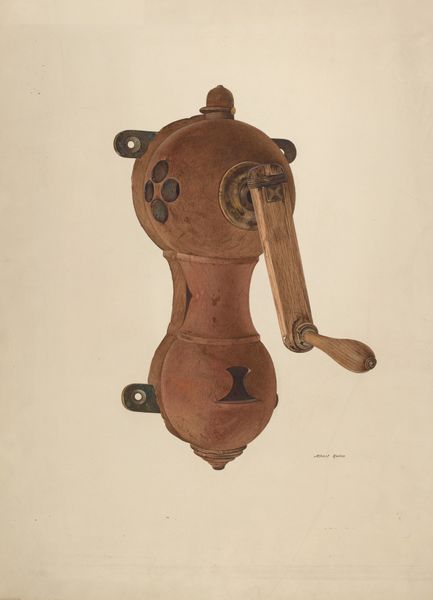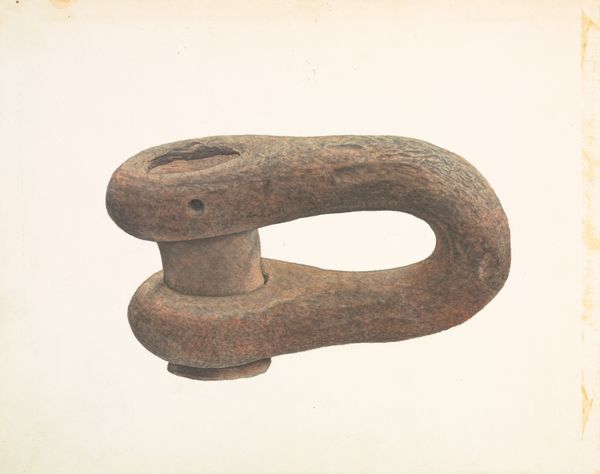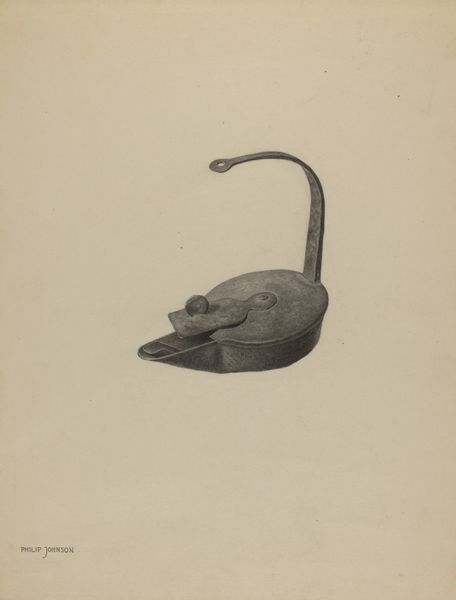
drawing, watercolor
#
drawing
#
charcoal drawing
#
watercolor
#
watercolor
#
realism
Dimensions: overall: 36.9 x 33.8 cm (14 1/2 x 13 5/16 in.)
Copyright: National Gallery of Art: CC0 1.0
Editor: This is Ray Price's "Metal Grits Grinder," created around 1939 using watercolor and charcoal. There's a quiet dignity in this depiction of a simple machine. How do you interpret this work? Curator: It speaks volumes about the intersection of labor, industry, and representation in the Depression era. We have to consider how artists chose to depict the tools of production. This isn't romanticized machinery; it's a very grounded, almost humble portrayal. It invites questions: Who operated this grinder? What was its social context? Editor: I hadn't thought about the artist's choices in terms of what *wasn't* depicted. Was this kind of representational realism common at the time? Curator: It was one approach among many. We saw social realism, glorifying the worker, but also more critical, even bleak, portrayals. The subtle details, like the rust and wear, make me wonder about the precarity of work during this time. Was Price celebrating ingenuity, or subtly critiquing the demands placed on the working class? Editor: That’s a good point. The way it's isolated against the background adds to that sense of… vulnerability, almost. Curator: Precisely. Think about the politics of representation—who gets seen, how, and why. What does it mean to center this utilitarian object during a period of widespread economic hardship? It pushes us to consider power dynamics. Editor: I see how it’s more than just a drawing of a machine; it’s a document reflecting the complex social landscape of its time. Curator: Exactly. And those questions are vital for understanding not only this piece, but art's role in shaping and reflecting our collective memory.
Comments
No comments
Be the first to comment and join the conversation on the ultimate creative platform.

